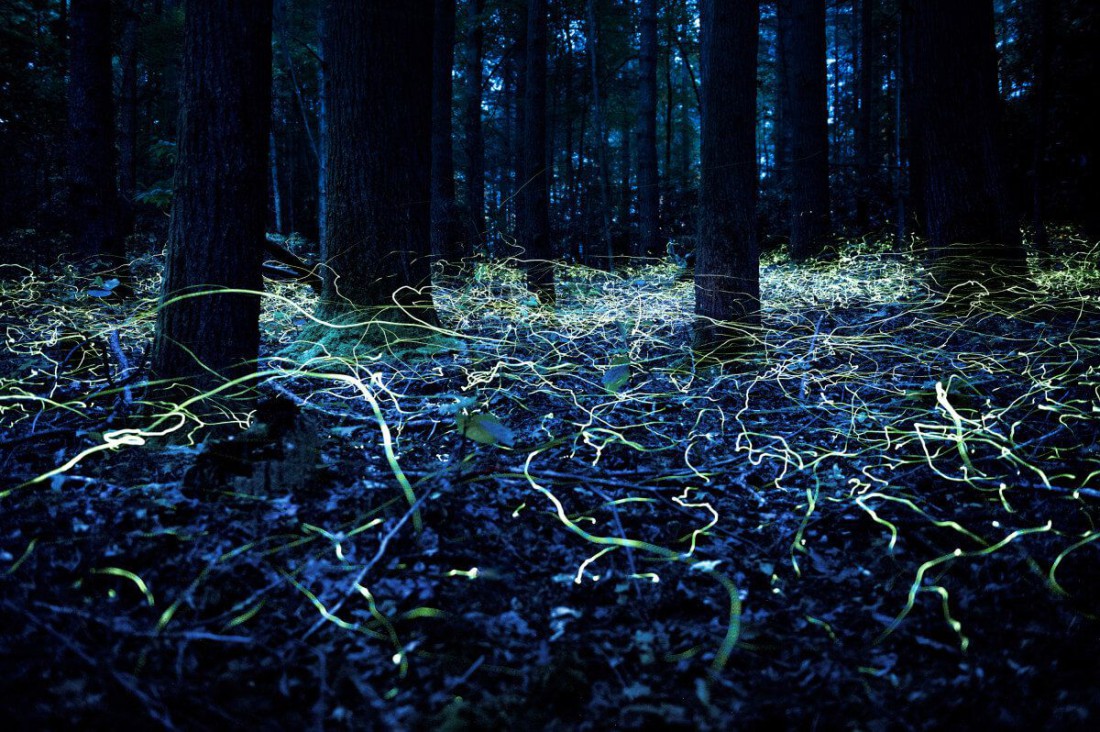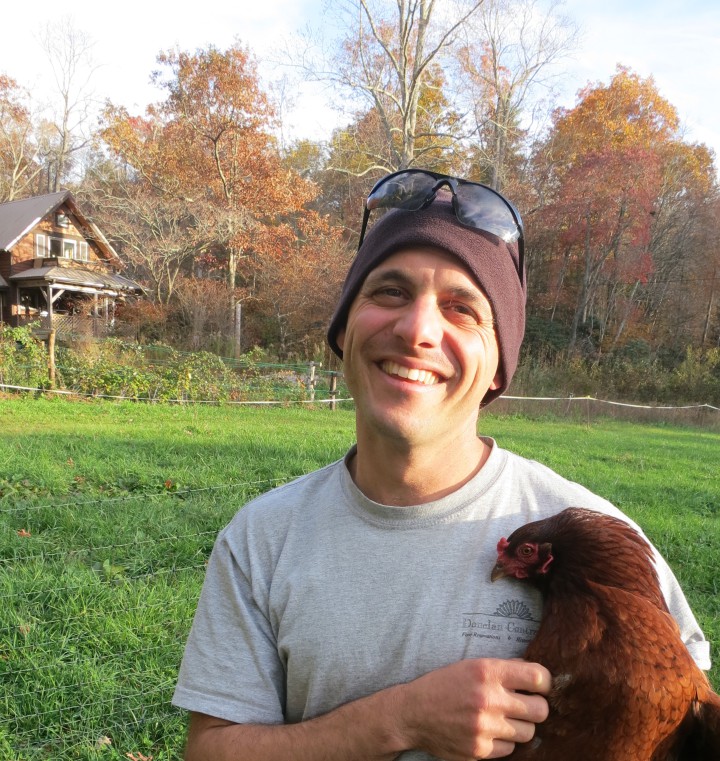BY TAL GALTON
“Hello darkness, my old friend…”
— Paul Simon
Like many beautiful and fantastical natural phenomena, the phosphorescence of fireflies is all about sex. But just as showy flowers designed to lure pollinating insects also happen to captivate humans, the flashes of fireflies, meant to attract mates of their own species, capture the imagination of kids and adults as well. Fireflies are another excellent example of cross-species seduction.
Many people are surprised to learn that the fireflies we see on warm summer evenings represent many different species in a whole family of beetles, the Lampyridae. Tennessee naturalist Lynn Frierson Faust recently published Fireflies, Glow-worms, and Lightning Bugs, the first field guide dedicated to native Lampyridae. The book covers 76 species found in eastern North America while making it clear that Lampyridae research is an evolving science. As with many of the lesser-known life forms (fungi, invertebrates and nonvascular plants, to name a few), far more remains to be discovered than is currently known.
Nearly all firefly species glow during some stage of their lives, often in the larval stage. On warm, dark evenings from late winter through late fall, you can see them glowing in the grass, as if mimicking the starry sky above. During their larval stage, which can last multiple years, glowworms are fierce little predators, veritable tigers of the leaf litter. They creep under and along the ground, preying on other insect larvae, snails and earthworms. Like many adult insects, fireflies are short-lived, and most species are believed to be infrequent eaters. The adults obsess about reproduction; eating is for kids.
Of the dozens of native fireflies, the handful of species that most folks encounter are the ones that are comfortable in suburban or other developed habitats. Perhaps the most common is Photinus pyralis, a midsummer beetle, often called “Big Dipper” for its J-shaped flash pattern. Found in lawns and fields, it’s the American robin of the firefly world.
To view a wider range of firefly species, one must venture farther afield into the darkness of the woods. Here in the Southern Appalachians, we’re lucky to have two of the most beguiling species. If you don’t live in the woods, it’s worth leaving your lawn and garden behind and seeking out these varieties in their forest homes.
The most famous is the synchronous firefly Photinus carolinus. For decades, these insects have drawn thousands of visitors to Elkmont in the Smokies. It was long believed that the only synchronous firefly species were native to Asia, until Faust pointed out to researchers that she and her neighbors had been enjoying the synchronicity of P. carolinus for generations.
In fact, the species lives all over the Southern Appalachians; one simply needs to know when and where to look. In her field guide, Faust writes that synchronous fireflies usually peak in early June and are common among maturing hardwoods at elevations between 2,200 and 3,000 feet. She further hints that they’re “especially attracted to small clearings surrounded by rich, open forest.”
The other Appalachian endemic that’s made a name for itself is the “Blue Ghost” firefly, Phausis reticulata. (Endemics are species found exclusively in one particular geographic area: Appalachian endemics are unique to these mountains.)
Both species are early-summer fliers with short seasons: One must act quickly to see them. Blue Ghosts peak even earlier than P. carolinus; where I live, at 2,700 feet, they begin to emerge in early May and are at their peak during the last week of May.
Brevard College professor Jennifer Frick-Ruppert and former student Joshua Rosen published a comprehensive study in 2008 on Blue Ghost morphology (body type) and behavior. What we know about them is astounding, but much remains a complete mystery, including why the flying males glow. Blue Ghosts are remarkable because they fly through thick forest and don’t flash. Instead, the airborne males cruise at knee height, searching for females that glow while lying in the leaf litter. The females don’t fly because they lack wings; larviform adults, they have grublike bodies and never develop common features of adult beetles. Where they are abundant, Blue Ghosts create the effect of an ethereal fairy village for the first hour of darkness during their three-week season.
Like all native flora and fauna, fireflies are threatened by habitat loss, primarily due to road and housing development and the subsequent encroachment by invasive species. Being insects, they’re also vulnerable to pesticides. And because they depend on light to communicate, they’re sensitive to light pollution. Headlights, streetlights, porch lights and anything else that disturbs or diminishes the natural state of darkness in our mountain fields and forests can alter firefly mating behavior, which in turn can affect their populations for generations.
Great Smoky Mountains National Park now has a lottery system for synchronous firefly viewing. DuPont State Forest closes certain trails during Blue Ghost season to protect their habitat. But don’t be deceived by the overcrowding at these sites. If you live in Western North Carolina, chances are you have both synchronous and Blue Ghost fireflies in your area, along with dozens of other species.
Let their mysterious glow enchant you. And as you enjoy the spectacle, learn to think like a firefly: Imagine that every artificial light interferes with your ability to serenade a mate. Make friends with the darkness.
Burnsville resident Tal Galton is a naturalist who loves introducing people to wild places. He runs Snakeroot Ecotours in Yancey County.





Excellent story regarding the ‘Magical Fireflies’. If you’ve never taken the time to leave the city and it’s lights at night, you’re missing out not only on viewing the fireflies, which upon seeing, immediately take me back to my childhood, but the myriad of stars in a truly dark sky.
Thanks! In fact, tonight is the grand opening of a Dark Sky Observatory on the old Energy Xchange site in Yancey Co. It is the first of its kind in the Southeast and sports a 34″ telescope. https://www.mayland.edu/starpark